Here lies the foundations of human civilizations. A warren of hand carved underground dwellings and structures. These were the literal cave men. The mythical troglodytes of our beginnings. The first stone age human settlements on the entire Italian peninsula. Homes passed on continuously for over 12,000 years. Where space age humans still live, proud of their hand dug caves. Roots so deep they have passed entirely out of human memory. I knew Matera would be a beautiful, almost spiritual place. But I didn’t realize how expansive and truly ancient this city really was. How miniscule the blip of our lives are in comparison. Matera is utterly haunting. A place that holds onto you. Like a childhood lullaby that you can’t remember the words to. The softest of melodies. Echoes. From an unimaginable time.
The modern city of Matera (then Matheola) was founded in 251 BC by the Roman Lucius Caecilius Metellus. Since then the city has fallen under rule by a variety of invaders but has always remained rebellious and considered ungovernable. The mystique of banditos. A rugged land with rugged people. While taking a tour in a Piaggio Ape, the guide casually explained the half finished castle sitting at the top of town, “It’s not worth seeing, it was never finished. They send a man to rule us but then we murder that man. So …”. The man was Count Giovanni Carlo Tramontano, a representative from a fief of barons given the town by the House of Aragon, and in 1514 discovered first hand what happens when you oppress Matera. Matera was one of the first cities to rebel against Nazi occupation when in 1943, the town attacked two Nazi soldiers for plundering a jewelry store. The Naples revolt started shortly after.
Though the elaborate structures stacked Jenga-like along the cliffsides seem dense and claustrophobic, workers who have been tasked to renovate this ancient part of town say that what you see on the surface accounts for only about 30% of the city. The remaining 70% stretches deep within the mountain in a goblin-warren of passages, cisterns, and deep cave structures with complex and thoughtfully designed architecture. Many of the surface buildings have been renovated into boutique cave hotels, coffee shops, and apartments, but all throughout the area, large portions of the city remain abandoned with bricked over doors and windows. And who knows what long forgotten places remain, deep in the earth. The hidden sacred spaces of the troglodytes.
Sassi di Matera
What I didn’t expect from Matera was that it is not as tiny as it appears in the postcards. The town is made up of several sections and parts of it are quite modern as the city spreads away from the canyon. The areas along the canyons cliffs, the ancient part of the city, are known as the Sassi which translates to stone block. At the top of the cliffs the city levels off into the flats or the Piano and the Historic Town Center, still ancient by most city standards even in Europe, and runs along the flats at the canyon’s edge. From there the city radiates outwards along the flats as it gets more modern.
The Sassi neighborhood itself is hard to visualize in photos. Instead of one valley it’s actually more like a large “W”. The large cathedral sits at the middle tip of the W and is the original site of the town’s fortress and housed the royal family. This area is known as the Civita and includes the areas once inside the city walls. On either side of that central ridge lies a valley along steep canyon walls that both terminate along a sheer cliff edge over the Torrente Gravina river in the main canyon along the top edge of the W. The cathedral looms over both sides.
If you’re facing the river, the right side of the W is known as the Sasso Caveoso and is the most ancient part of the city. The dwellings here can be traced back to the Palaeolithic era (old stone age) and are of the most ancient human settlements in Europe, continuously updated and maintained for 12,000 years.
The left side of the W is know as the Sasso Barisano, the side of old town that faces the city of Bari. This area is visually very similar to the Caveoso side. It’s technically a newer section of town but very ancient in comparison to most civilizations.
Throughout the Fascist rule of Italy, the southern regions languished under poverty and neglect. Without support it fell into a state of lawlessness and poor health. Its reputation became so bad that prisoners were exiled here during the war. Families had poor sanitation and often mixed households between themselves and the livestock. The region became associated with intractable poverty which only worsened as the war ended. When bouts of malaria hit the area infant mortality rose to over 50%. Fires had to be kept to keep the wolves and other predators from the newly dead. Media coverage branded the city the shame of Italy. In the 50s, with increasing social pressure, the government hastily built modern housing projects on the flats and forcibly removed all of the residents who had lived there for many generations. The Sassi remained abandoned and vacant attracting squatters and crime and was even proposed to be walled off and destroyed.
In 1986 the city passed an ordinance to renovate the Sassi and repurpose the vacant structures that had been force evacuated in the 50s. This work started in the Barisano and has proceeded through the Civita and is now mostly through the Caveoso excluding a section of original cave houses along the cliffs on the furthest side which are supposedly being made into an open air museum. Although all throughout the Sassi you’ll find sections of dwellings that are fenced off with the doors bricked over and sitting abandoned still. I noticed local squatters clandestinely slipping through fences and gates into these areas. Much, I assume, like it has always been here.
Sasso Barisano
Your first taste of the Sassi will probably be from the view point at the Piazza Vittorio Veneto in the center of town. There’s a great public balcony with some of the best views into the Barisano. Here you’ll also find tours of the enormous Roman cistern that was only recently rediscovered and excavated. From here you’ll find easy access down into the dense hillside streets below.
Walking to the rock Church of Saint Mary of Idris
One of the most interesting and prominent structures in the Caveoso is the Church of Saint Mary of Idris, hewn from a spire of rock that overlooks the valley of the Caveoso on one side and the valley of the Torrente Gravina on the other. And this was first trek into this side of town. You first have to venture down into valley of the Caveoso, then climb back up the other side, to arrive at the steps to the church. There’s a small fee and no photos allowed inside, but well worth it. You’ll find a large altar with paintings on one side and on the other a series of cave rooms decorated in Byzantine style frescos. Actually there are two layers of frescoes and you can see them both in different areas. Continue around the rocky terrace to the back of the church for stunning views of the valley and access to the cave structures along the cliffs.
Sasso Caveoso
After our first journey to the rock church, we spent several days exploring this magical area. An endless maze of narrow stairways and little spaces carved from the rocks. It feels like inhabiting a Miyazaki movie or the goblin city at the center of the Labyrinth. Untold millennia of creative human habitation, carving wonderful little spaces, giving themselves to the existing landscape instead of making everything a grid or a rectangle. There’s a natural harmony that I think we all secretly long for.
Abandoned cave houses
A large portion of the structures in the Caveoso are cave houses. The façade of the house may be constructed with stone blocks but the space itself continues into the mountainside with hand-carved arches and elaborate cisterns for water collection and storage. These spaces and stacked one on top of the other. Some of these spaces have been reclaimed and modernized, some have been restored as museums, especially the elaborately frescoed rock churches, but many remain abandoned and ruined. I didn’t get a chance to deeply explore the city’s underground. I was injured at the time. But I did get some shots through openings I found or easily accessible areas that had been blocked off.
The aesthetic of these carved houses is so organic and fun. I really loved exploring there.
Church of St. Peter
Another notable structure in the Caveoso is the Church of St. Peter which sits along the canyon cliffside right beside the rock Church of Saint Mary of Idris. This church is a bit more traditionally constructed but has lots of interesting frescos and sculptures to check out. If you continue around to the backside you’ll get fantastic views of the canyon and access to the other cave structures along the cliffs.

















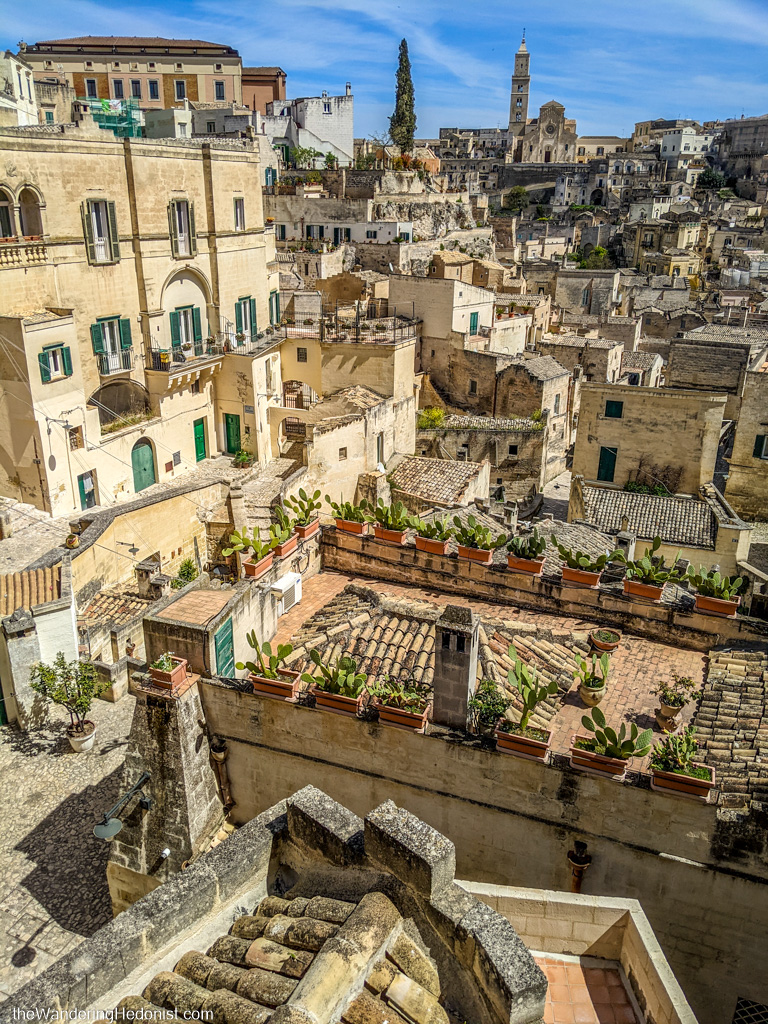
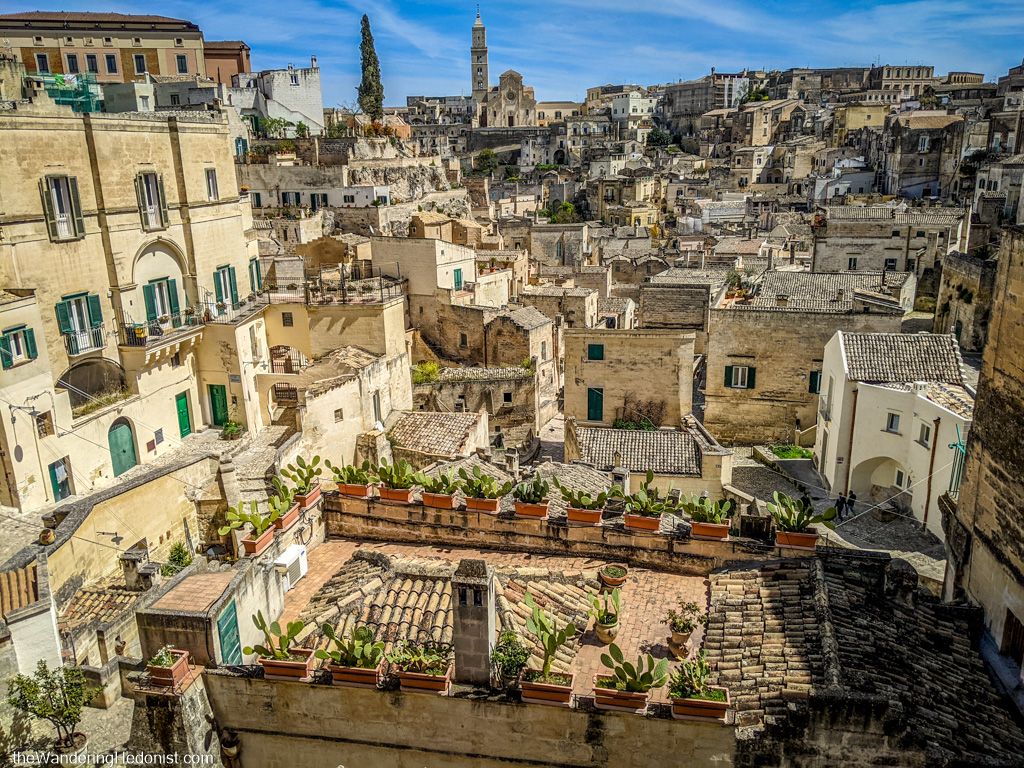
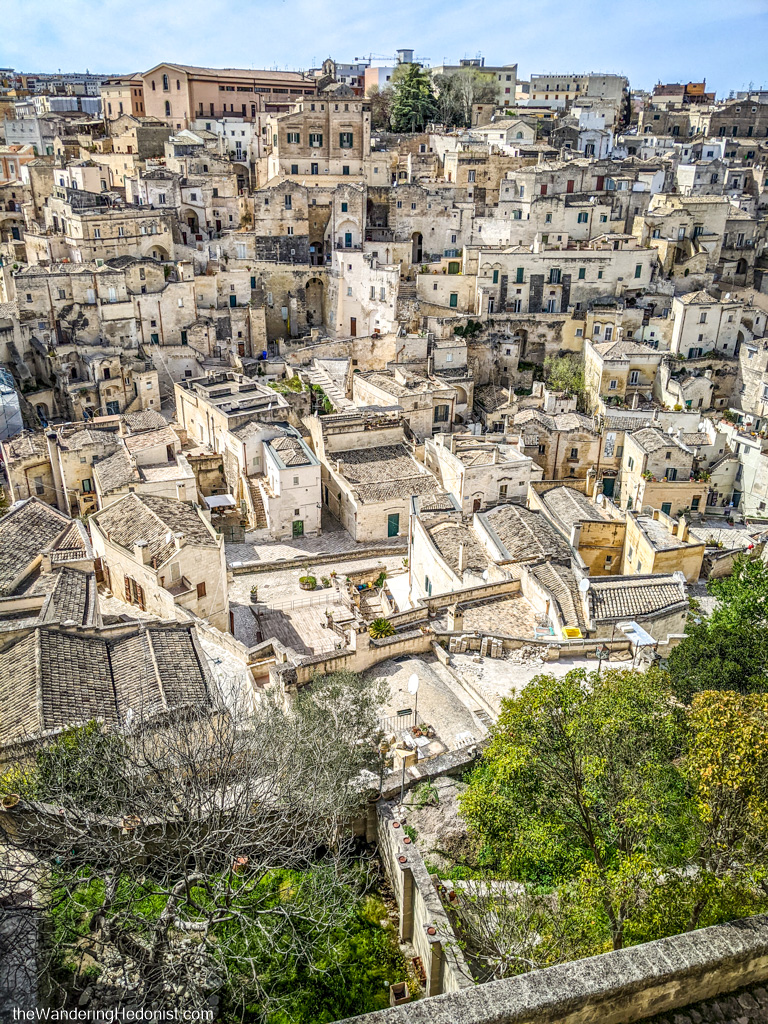
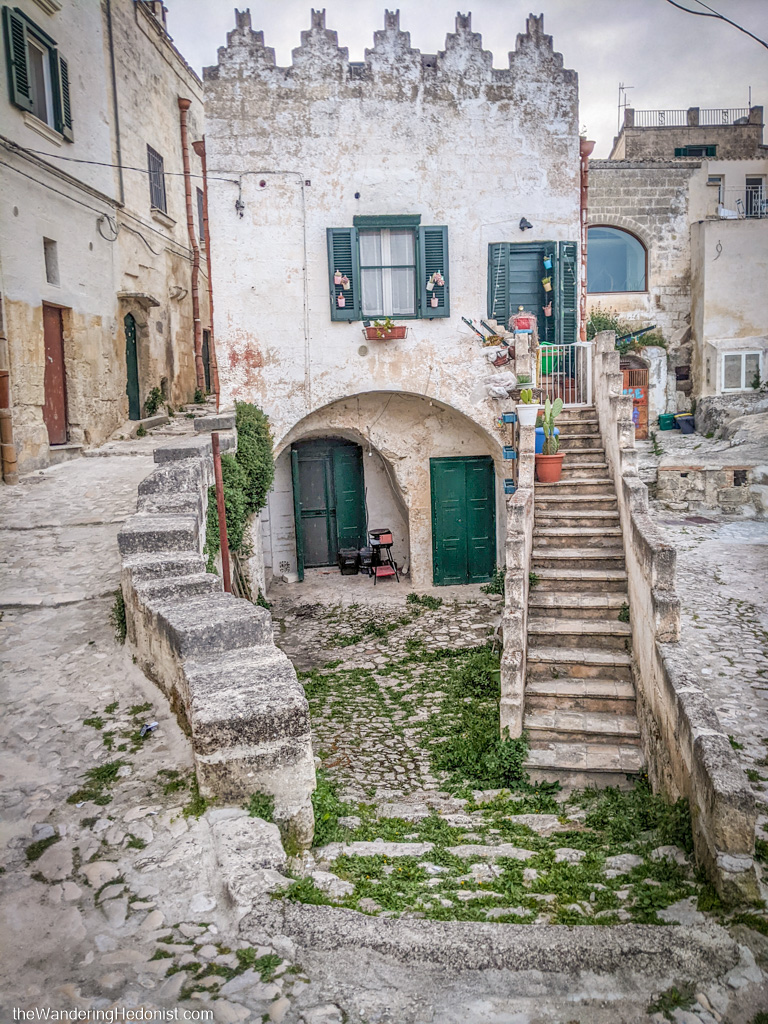
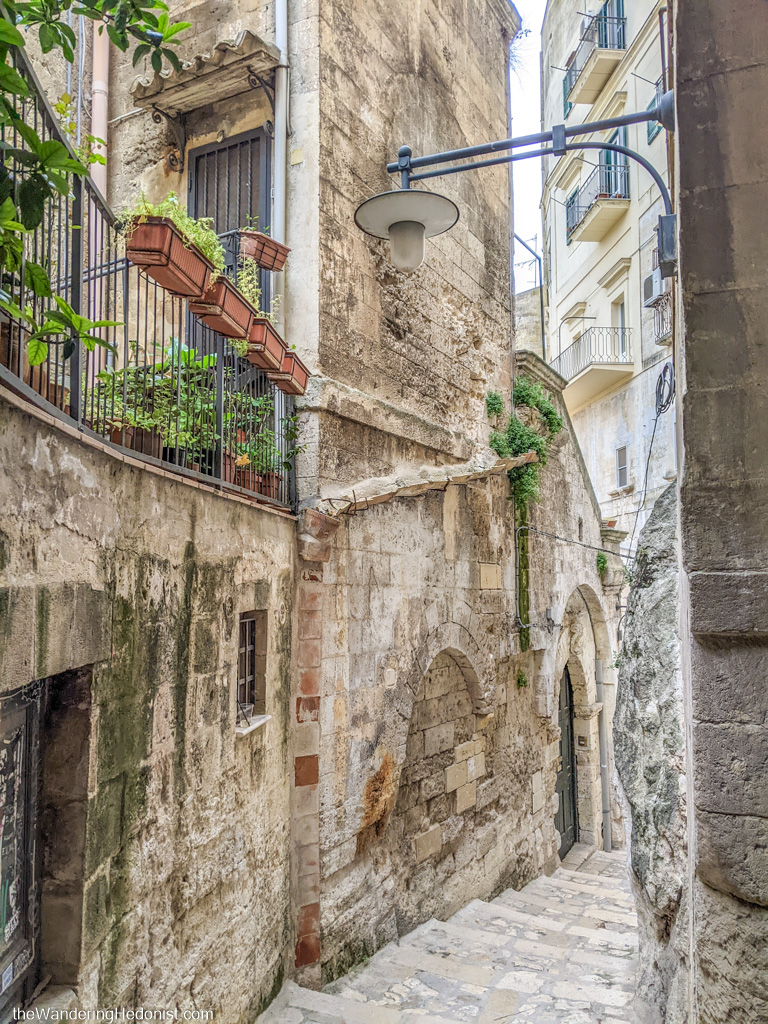
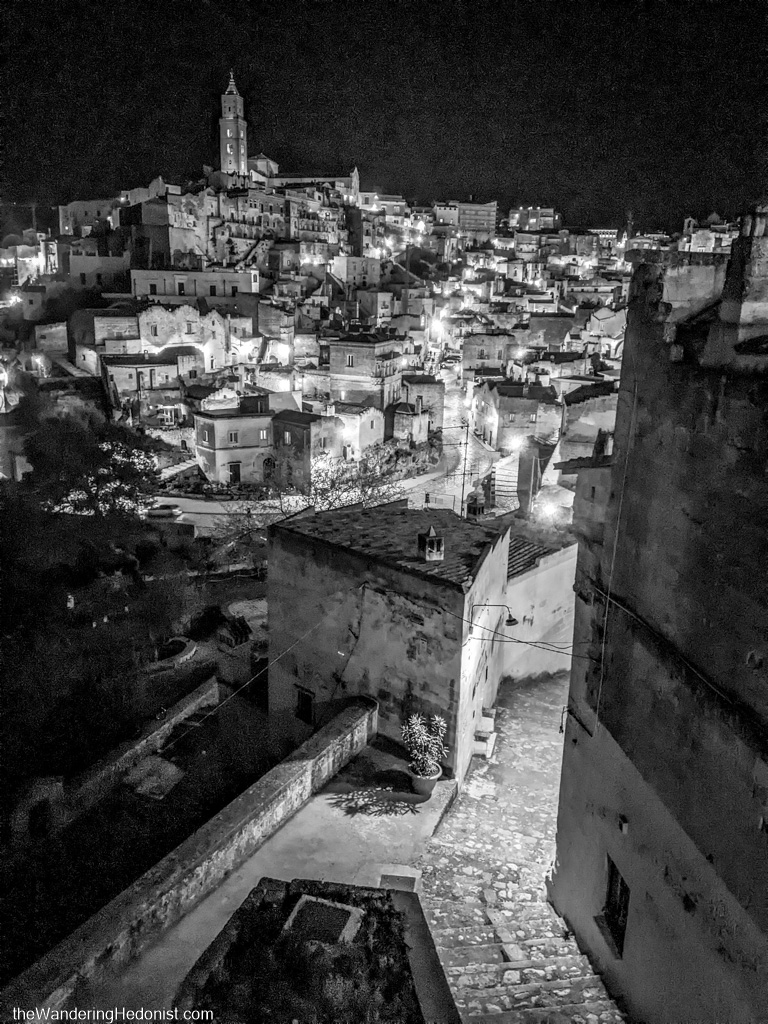
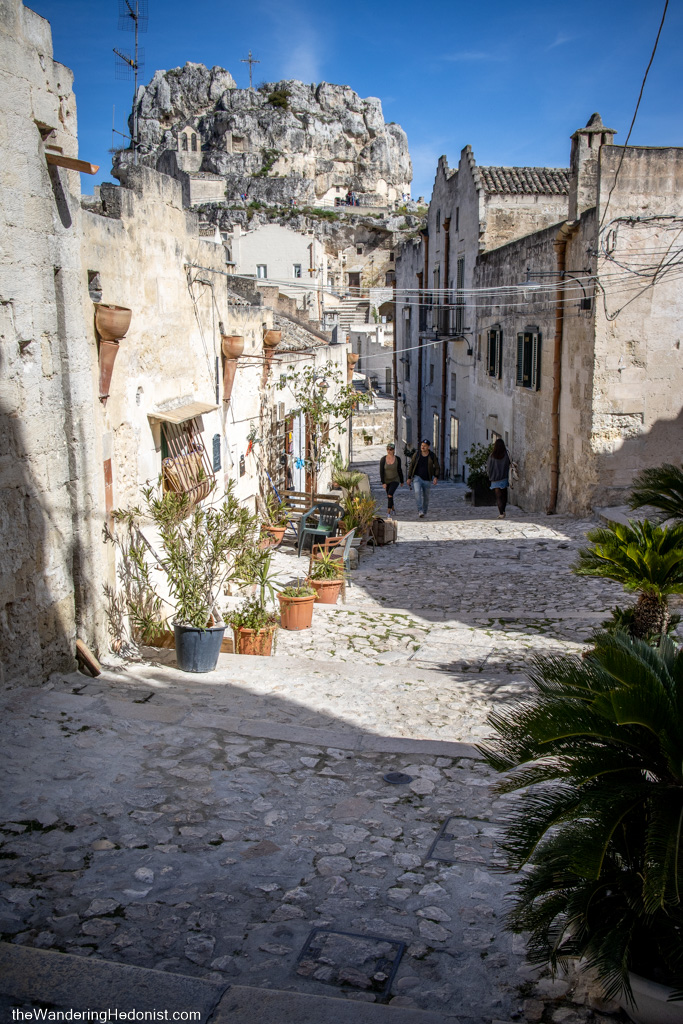







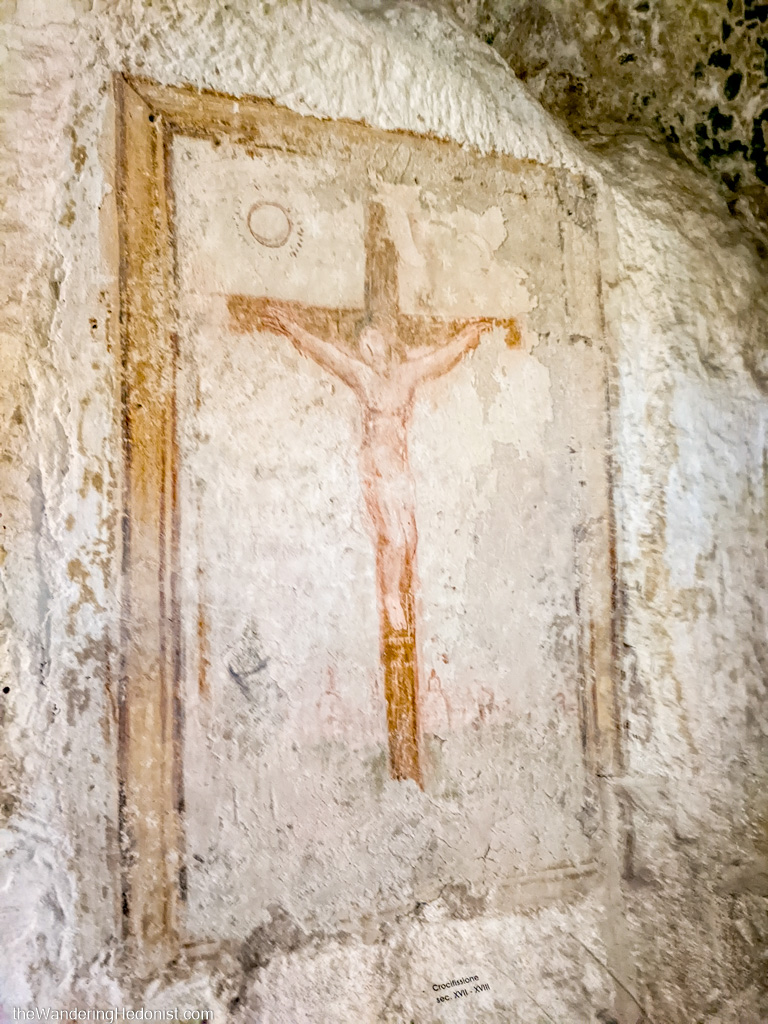
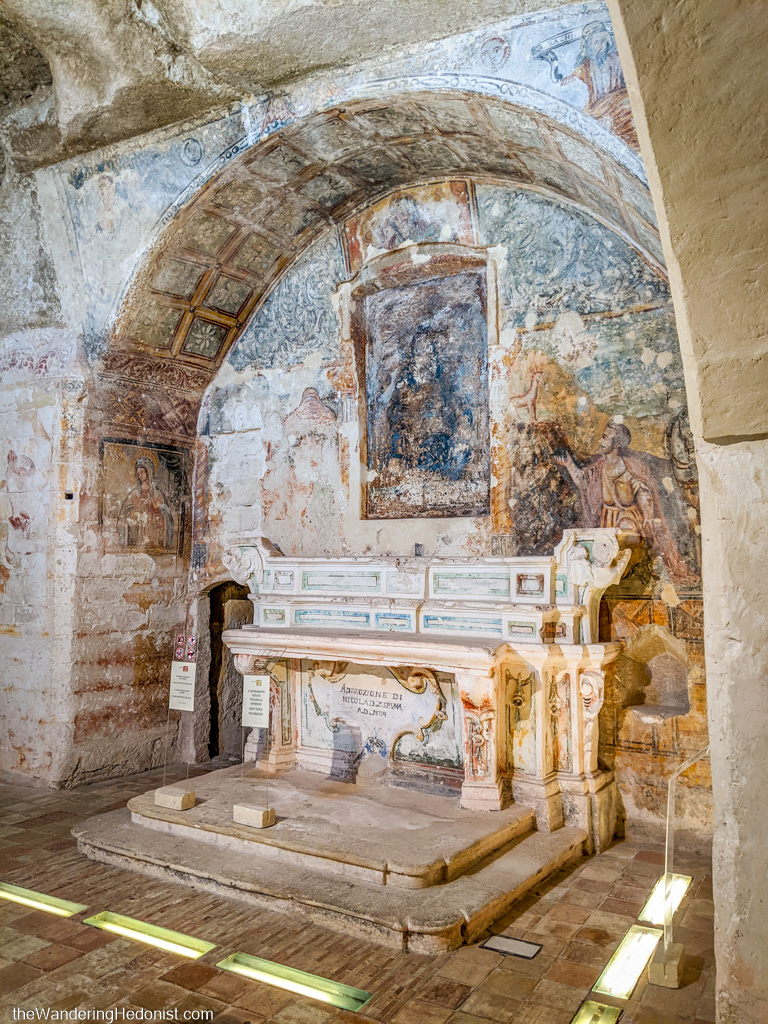
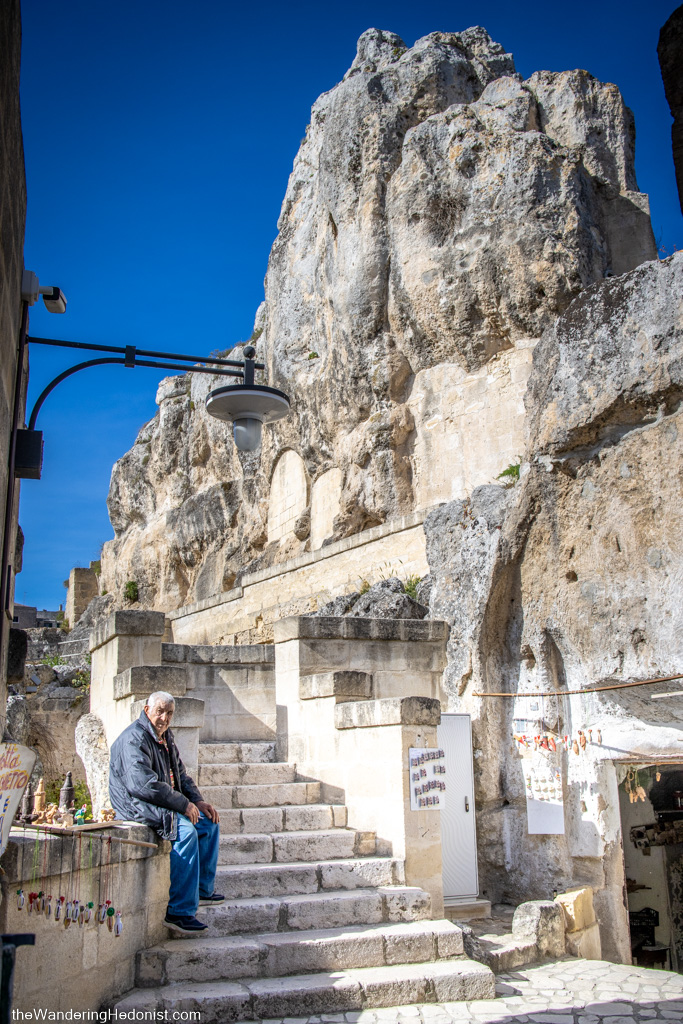
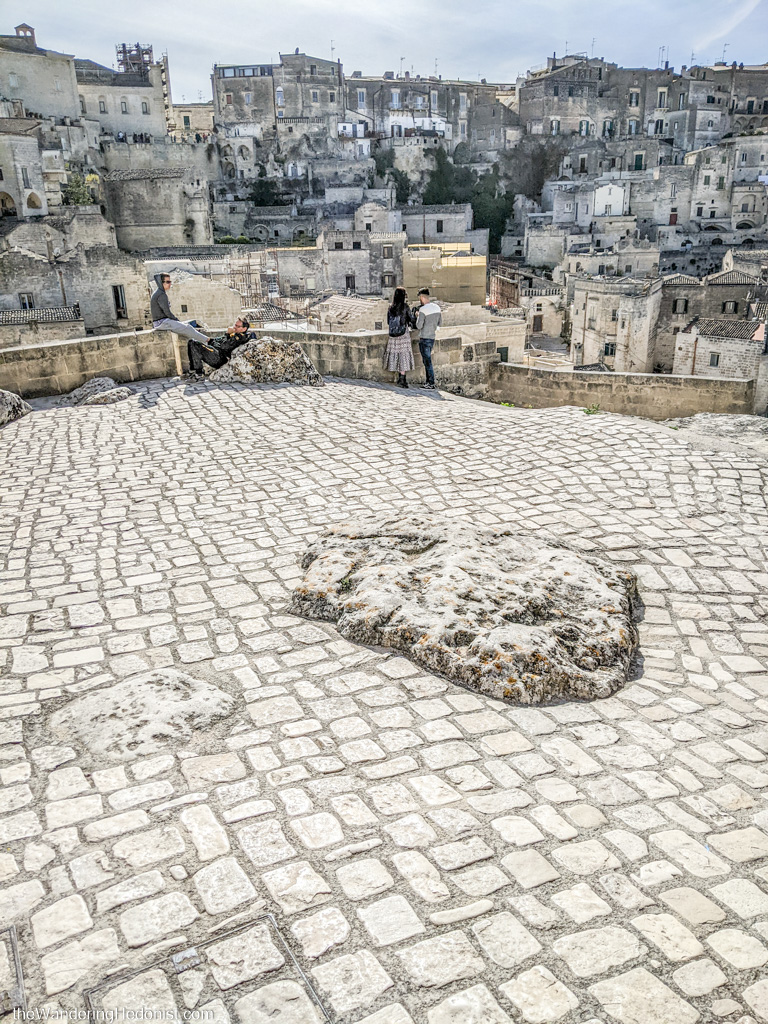
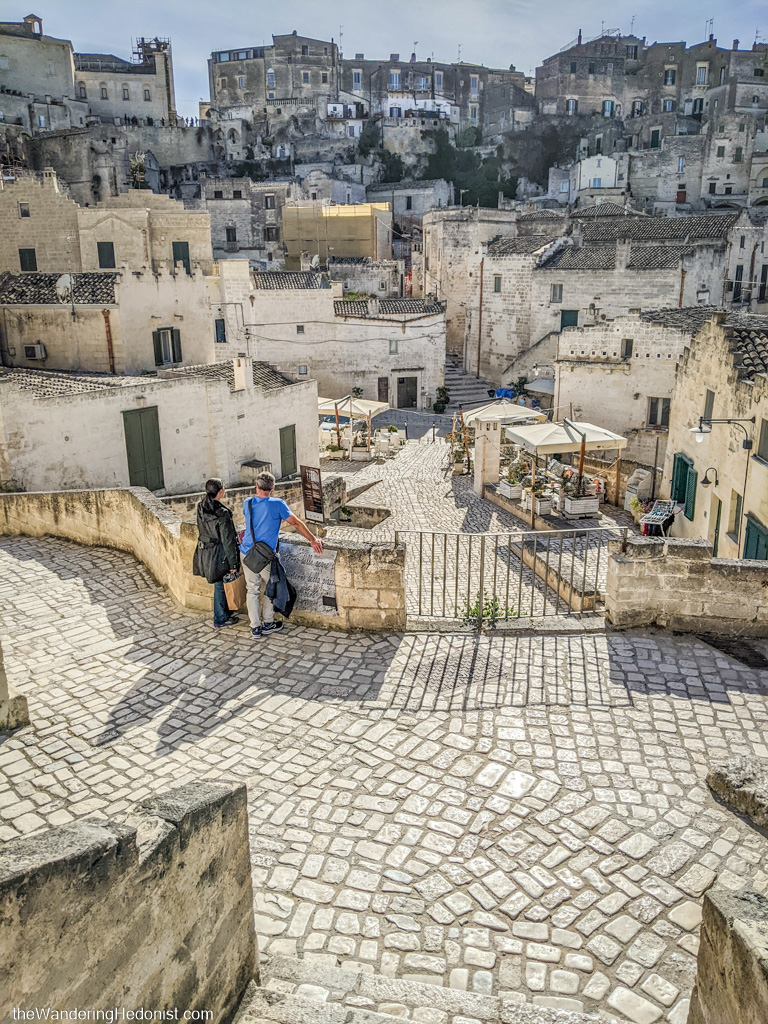


























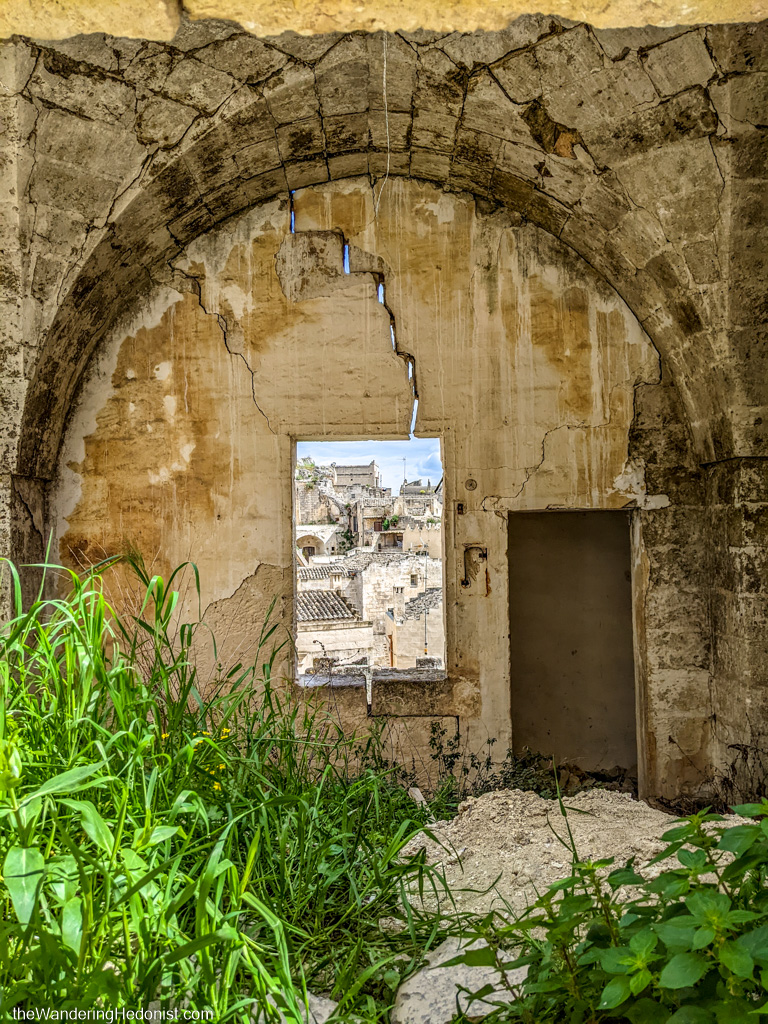







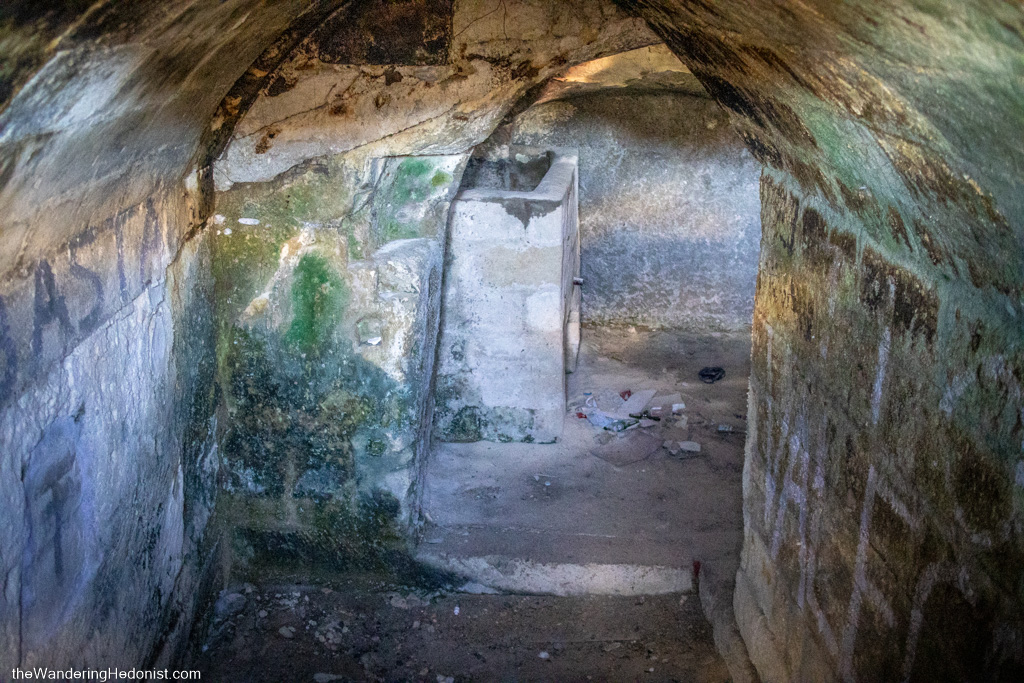




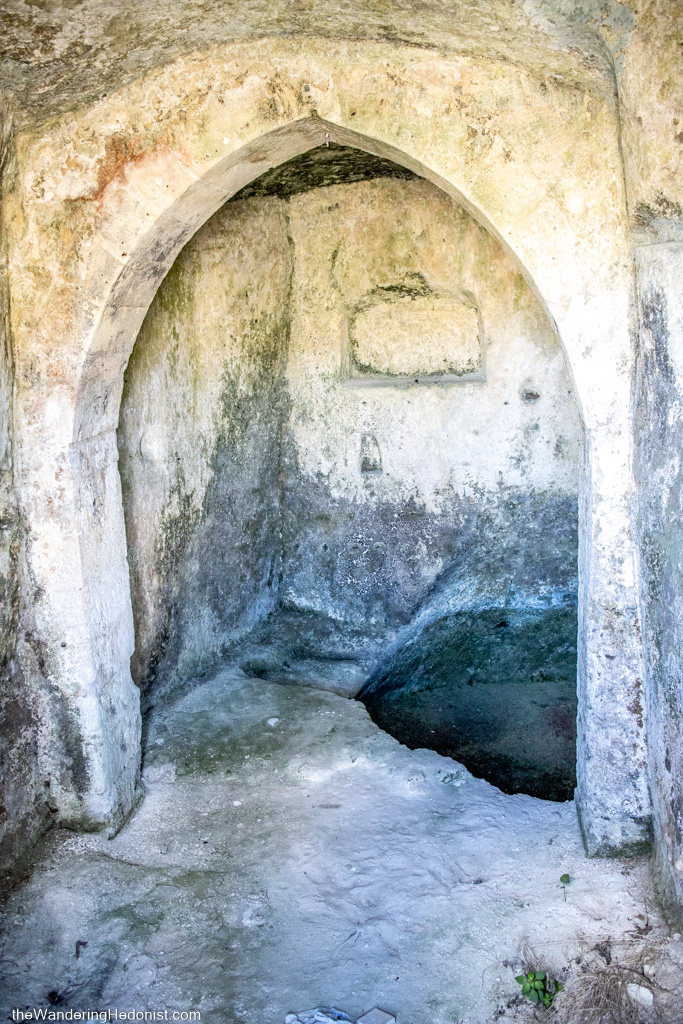






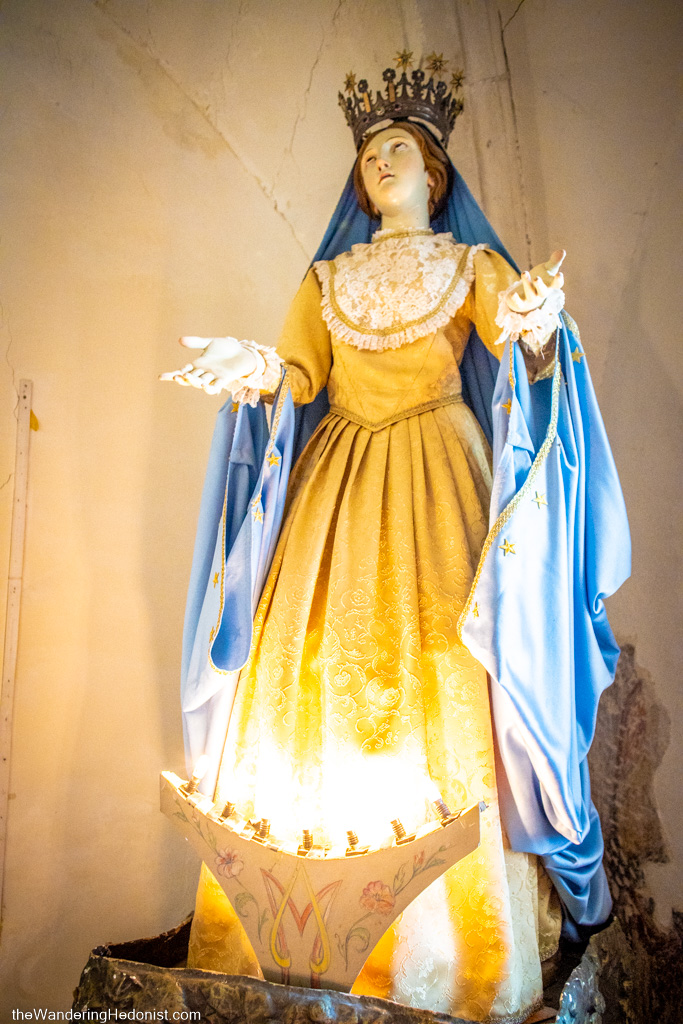
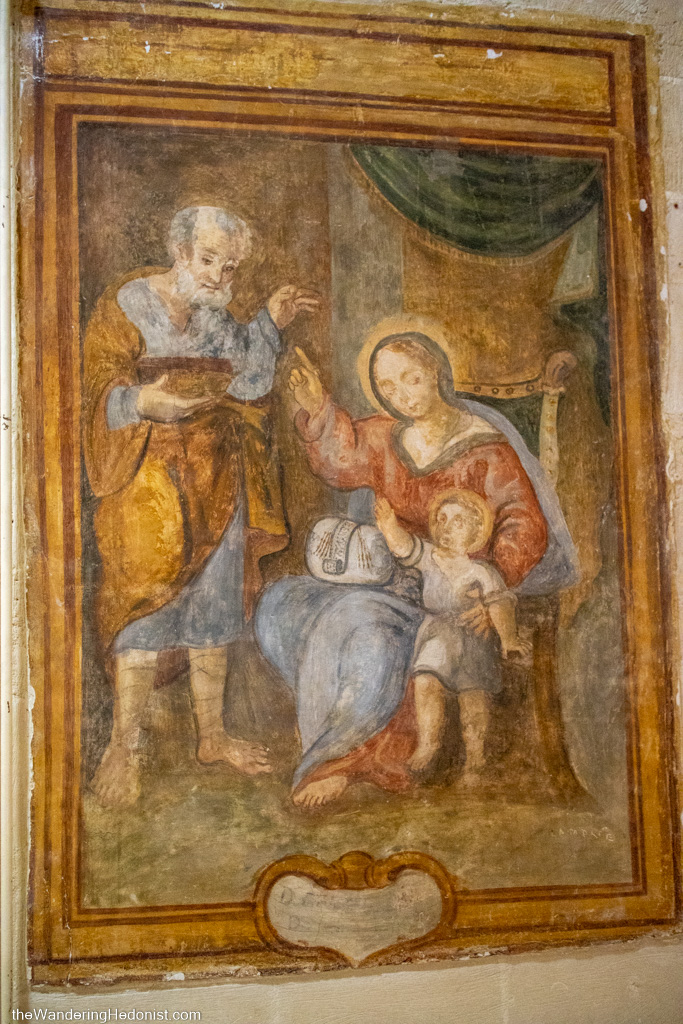




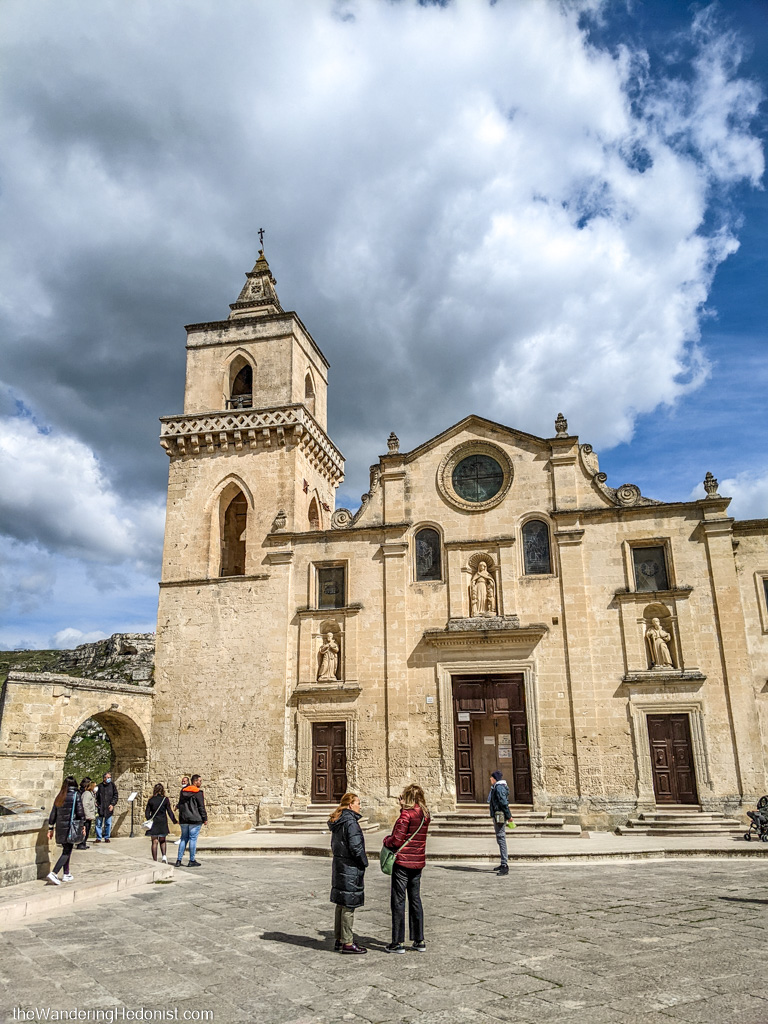
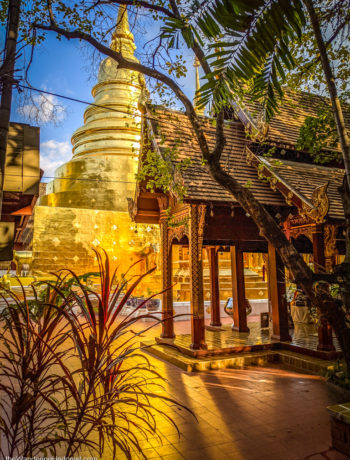
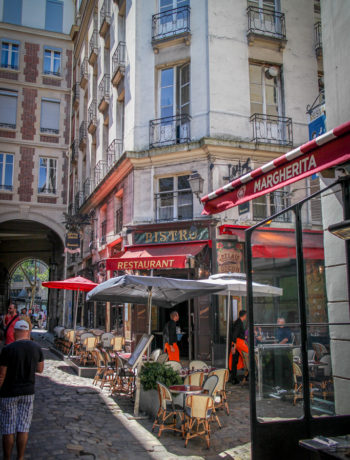
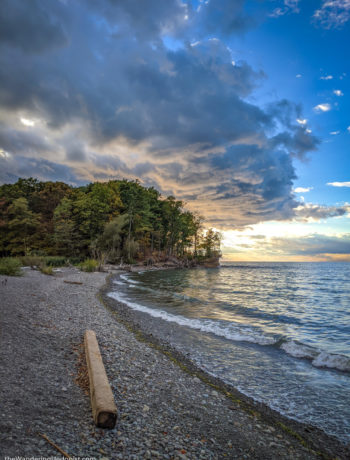
No Comments